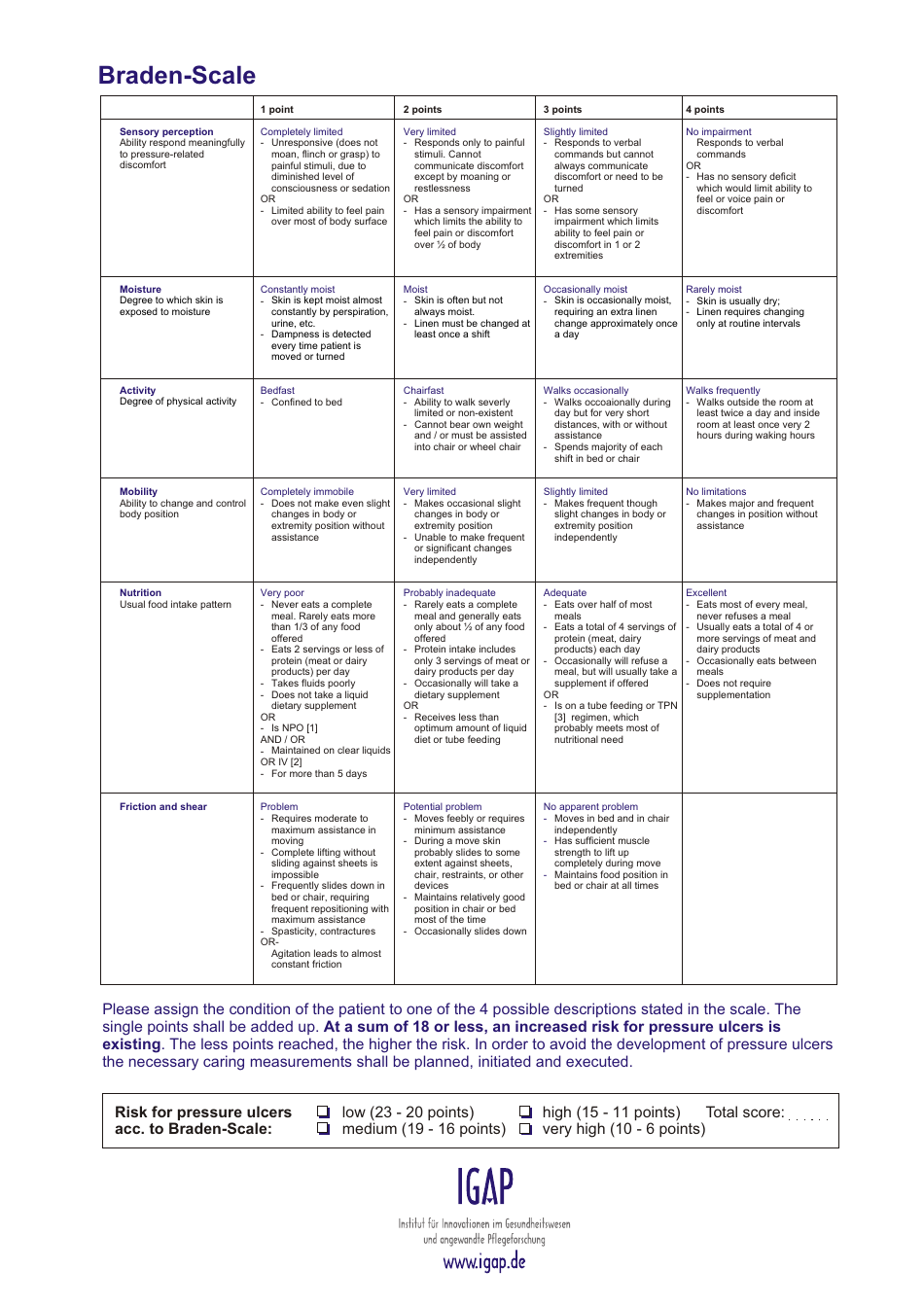As an Asian person, I understand the importance of promoting healthcare and well-being. Today, I would like to discuss the Braden Scale, a tool used in the medical field to assess the risk of developing pressure ulcers or bedsores. This scale helps healthcare professionals identify individuals who are at higher risk and provides guidelines for preventive measures.
Braden Scale Baru

Printable Braden Scale - Printable Blank World
 In this image, we see a printable version of the Braden Scale. This allows healthcare professionals to easily access and utilize the scale in their daily practice. Having a printable version provides convenience, ensuring that the scale is readily available whenever and wherever needed.
In this image, we see a printable version of the Braden Scale. This allows healthcare professionals to easily access and utilize the scale in their daily practice. Having a printable version provides convenience, ensuring that the scale is readily available whenever and wherever needed.
Braden scale: PRESSURE ULCERS | Nursing | Pinterest | Pressure ulcer
 The image above illustrates the Braden scale in a nursing context, emphasizing the significance of this assessment tool in preventing pressure ulcers. Nurses play a vital role in evaluating patients’ risk and implementing appropriate interventions to mitigate the development of these painful and potentially dangerous wounds.
The image above illustrates the Braden scale in a nursing context, emphasizing the significance of this assessment tool in preventing pressure ulcers. Nurses play a vital role in evaluating patients’ risk and implementing appropriate interventions to mitigate the development of these painful and potentially dangerous wounds.
Braden Scale Pdf - Fill Online, Printable, Fillable, Blank | pdfFiller
 This image showcases a digital version of the Braden Scale in PDF format. It highlights the convenience of easily filling out the scale online, saving time and effort. Healthcare professionals can now utilize technology to streamline their documentation processes and ensure accuracy in assessing pressure ulcer risk.
This image showcases a digital version of the Braden Scale in PDF format. It highlights the convenience of easily filling out the scale online, saving time and effort. Healthcare professionals can now utilize technology to streamline their documentation processes and ensure accuracy in assessing pressure ulcer risk.
Braden Scale | Eating | Pain

Braden scale | Nursing | Pinterest | Scale, Nurse stuff, and Wound care
 This image portrays the relevance of the Braden Scale in the nursing profession and emphasizes its significance in wound care. Nurses actively utilize this tool to determine the appropriate interventions, such as applying pressure-relieving devices or repositioning the patient at regular intervals, to ensure optimal patient care.
This image portrays the relevance of the Braden Scale in the nursing profession and emphasizes its significance in wound care. Nurses actively utilize this tool to determine the appropriate interventions, such as applying pressure-relieving devices or repositioning the patient at regular intervals, to ensure optimal patient care.
braden_q_scale.pdf | Pain | Perception

Braden-Scale Chart - Igap Download Printable PDF | Templateroller
 This image showcases a comprehensive Braden-Scale Chart, which is available for download as a printable PDF. Such charts provide a visual representation of the scale, making it easier for healthcare professionals to track and record their assessments accurately.
This image showcases a comprehensive Braden-Scale Chart, which is available for download as a printable PDF. Such charts provide a visual representation of the scale, making it easier for healthcare professionals to track and record their assessments accurately.
Braden q Scale

1 The Braden scale for predicting pressure sore risk.
 The final image portrays “The Braden scale for predicting pressure sore risk.” This comprehensive visual depicts the scale and its various components, highlighting the importance of early prevention and intervention to mitigate the risk of pressure ulcers.
The final image portrays “The Braden scale for predicting pressure sore risk.” This comprehensive visual depicts the scale and its various components, highlighting the importance of early prevention and intervention to mitigate the risk of pressure ulcers.
In conclusion, the Braden Scale is a valuable tool widely used in the medical field to assess the likelihood of developing pressure ulcers. Its various versions and printable formats enable healthcare professionals to easily incorporate it into their practice, ensuring optimal patient care. By utilizing this scale, healthcare providers can identify individuals at higher risk, intervene promptly, and prevent the painful and potentially dangerous consequences of pressure ulcers.